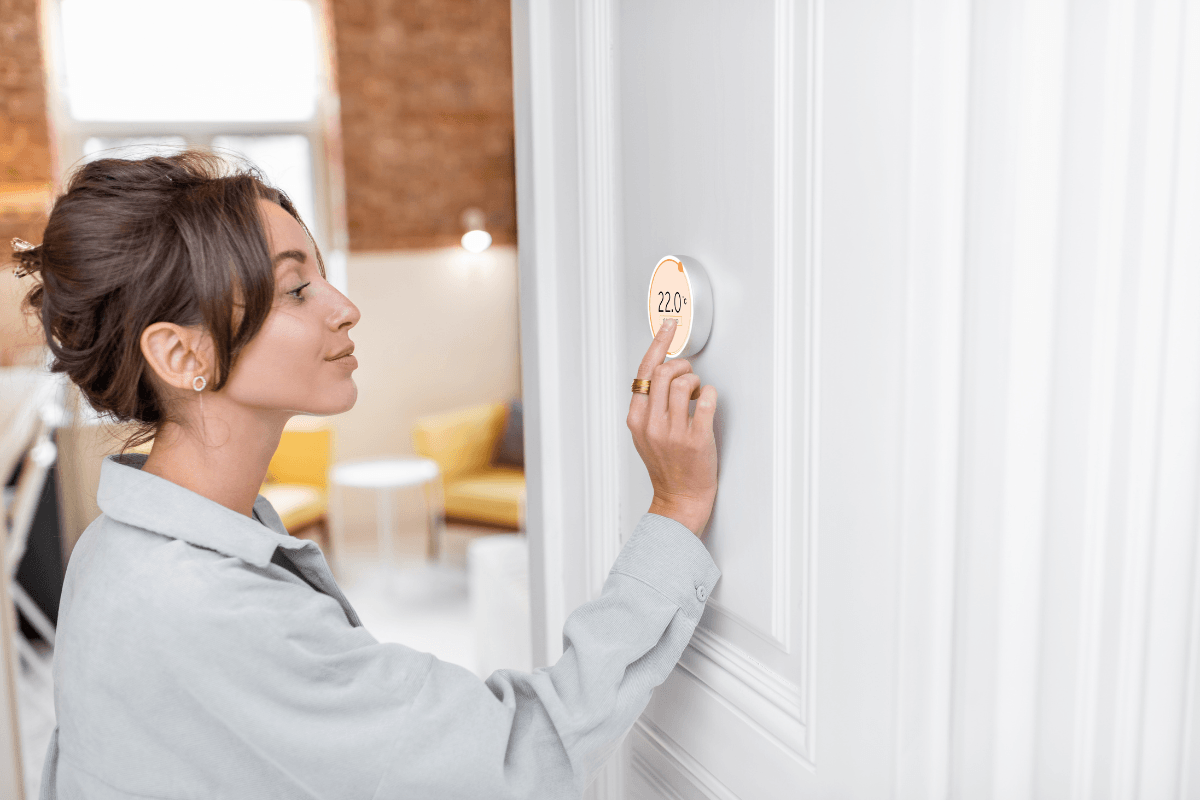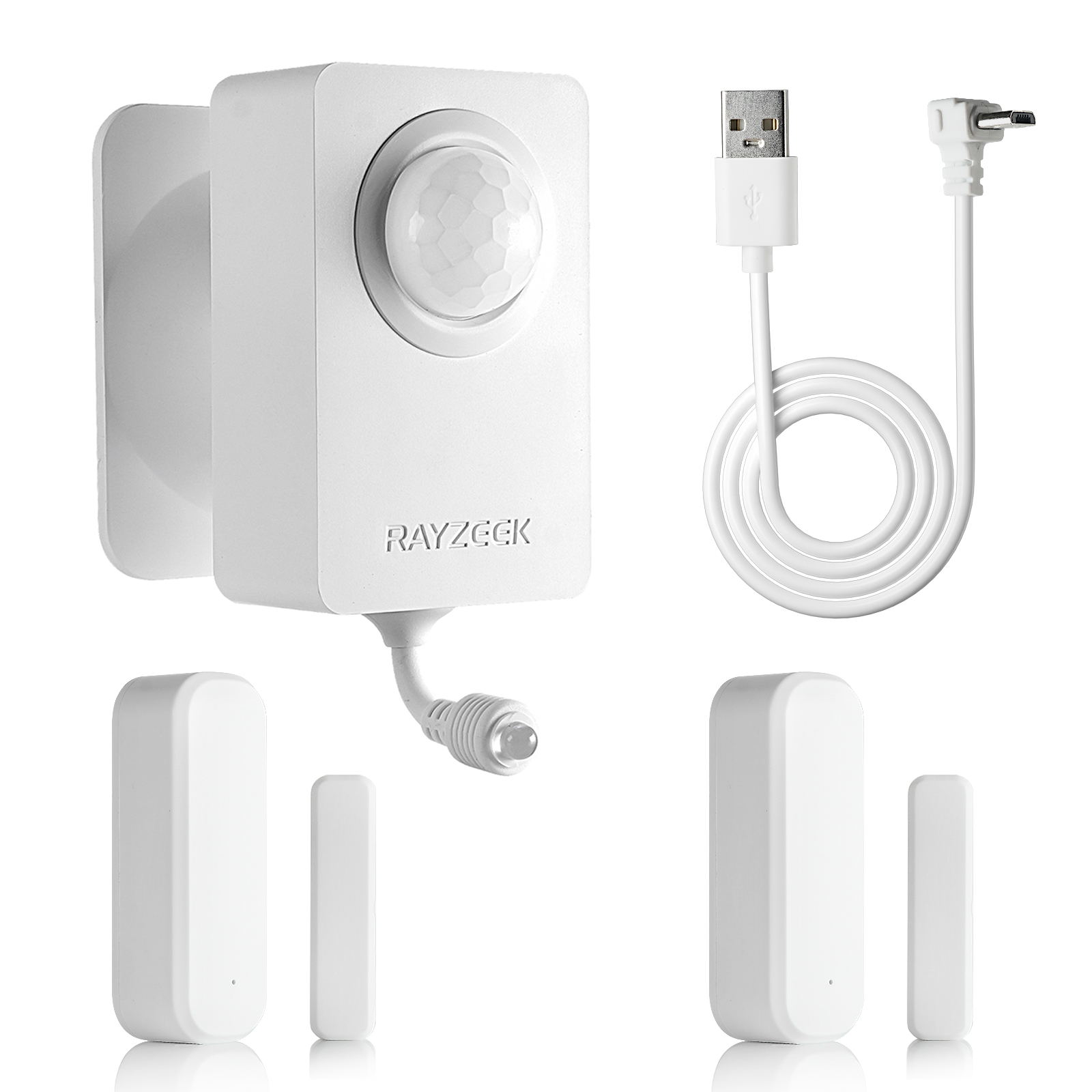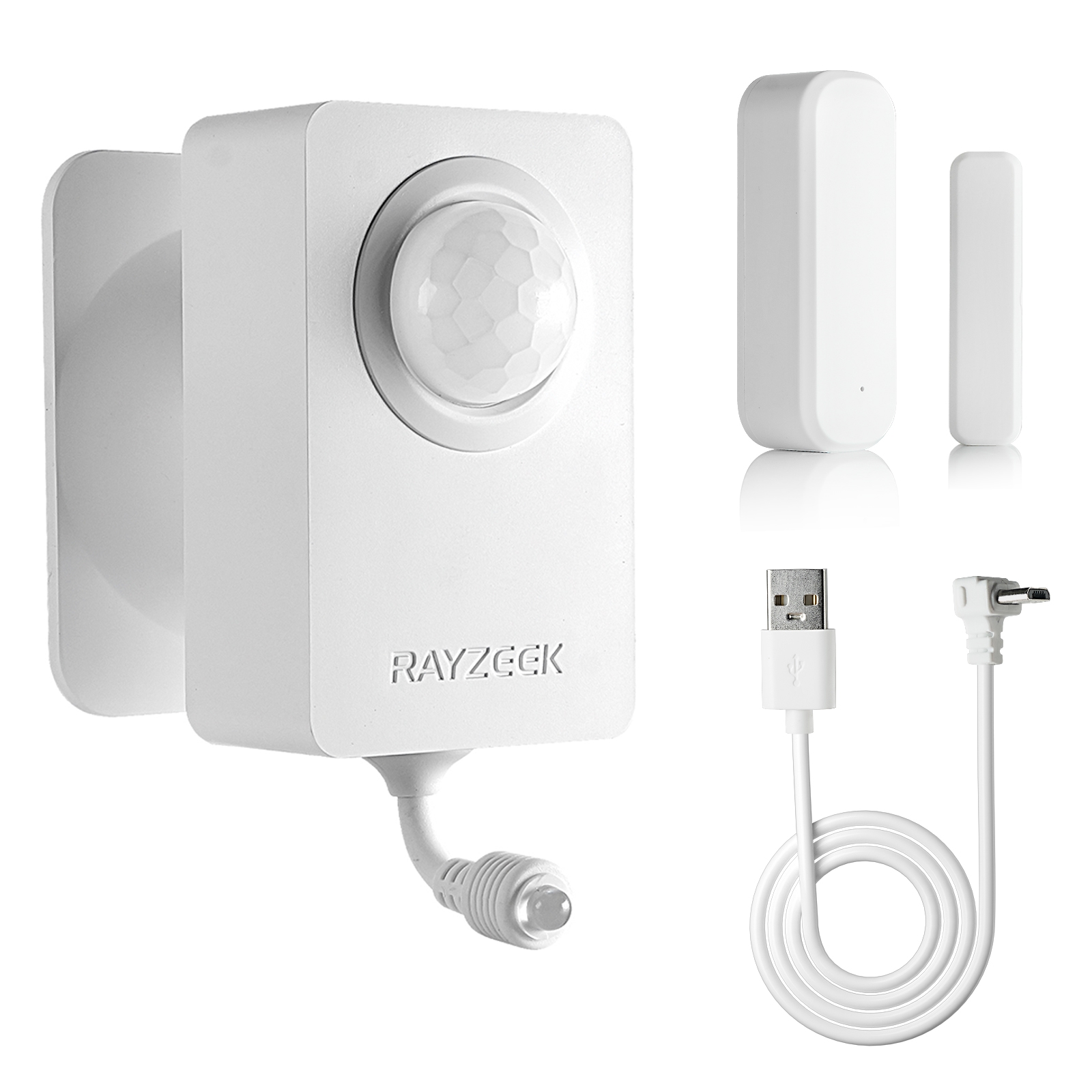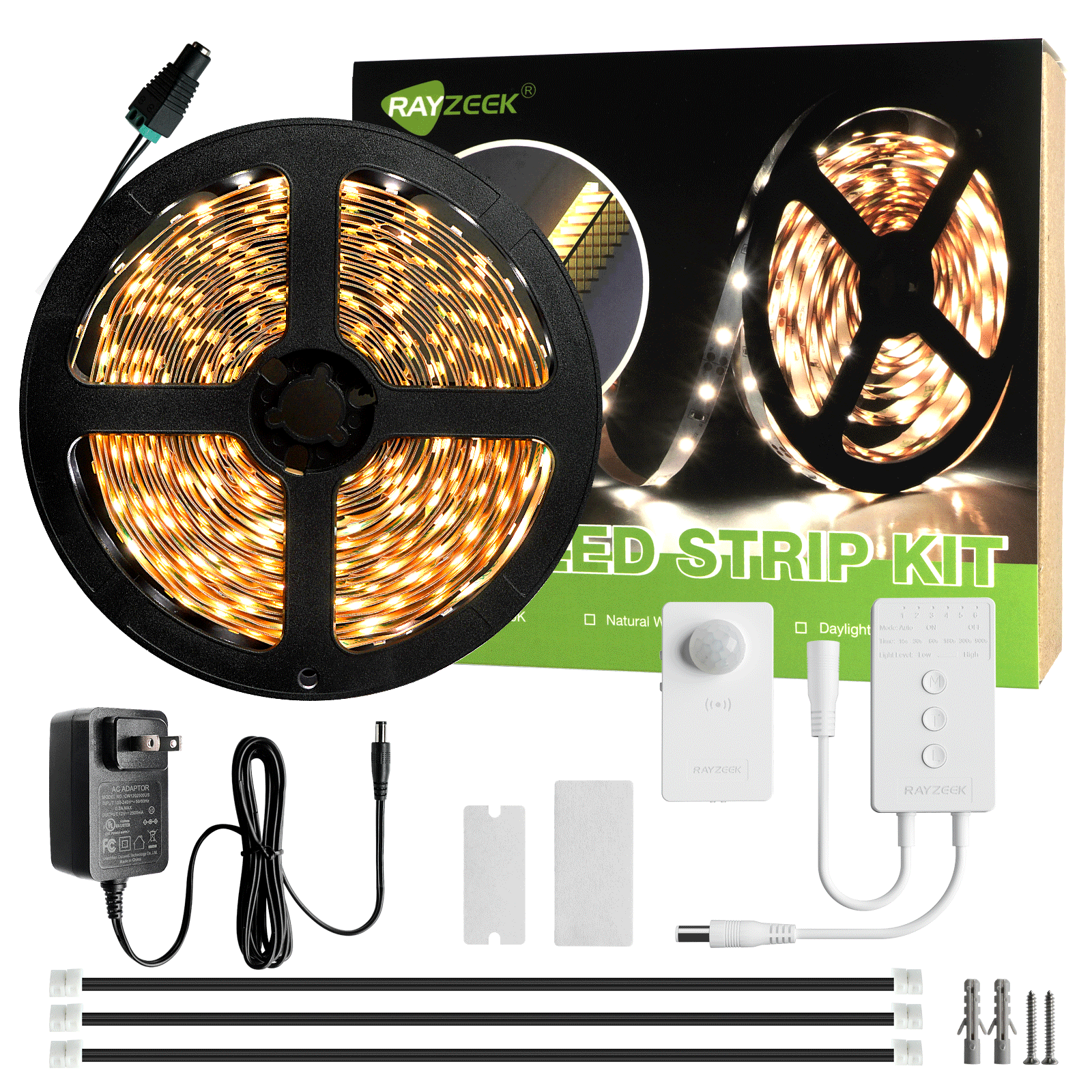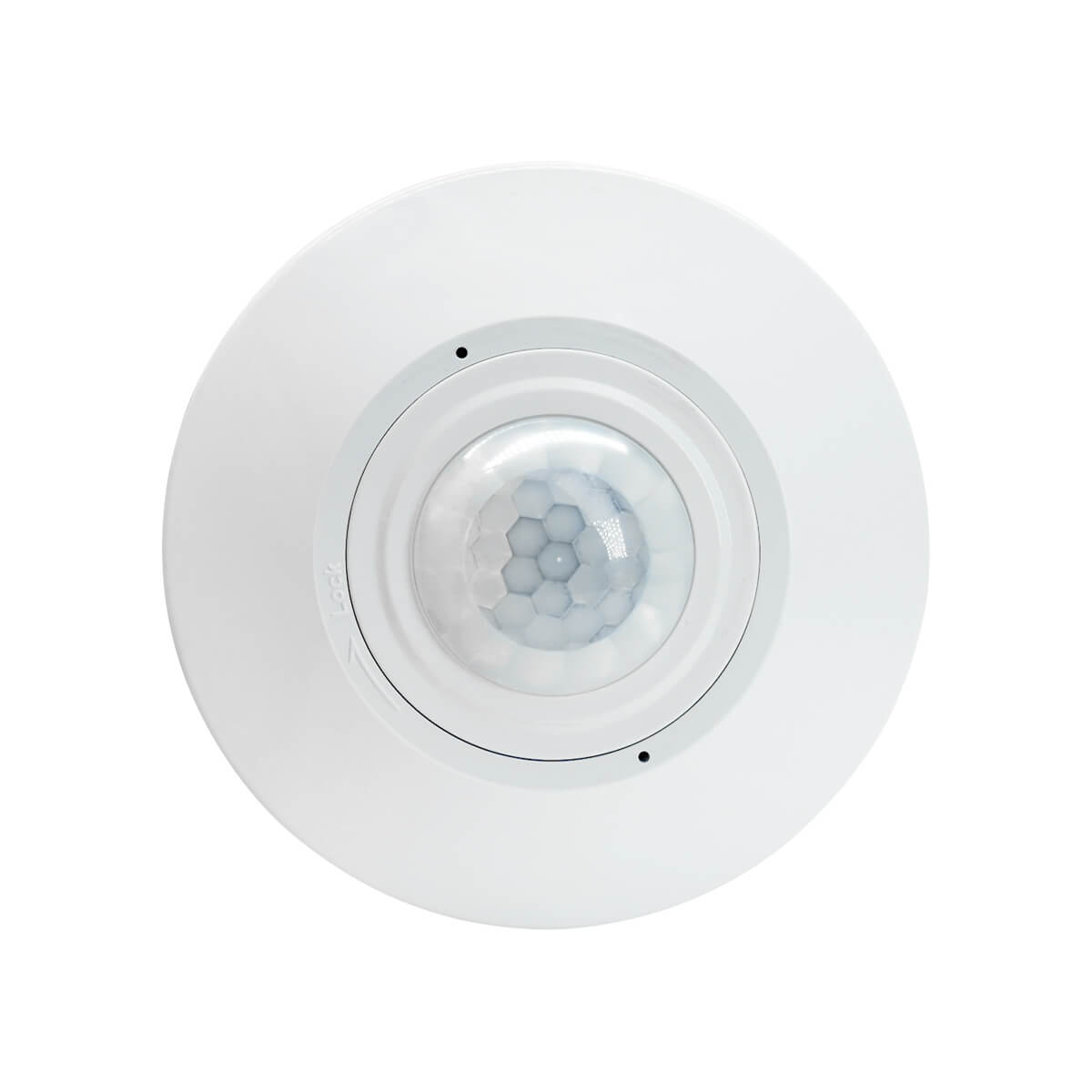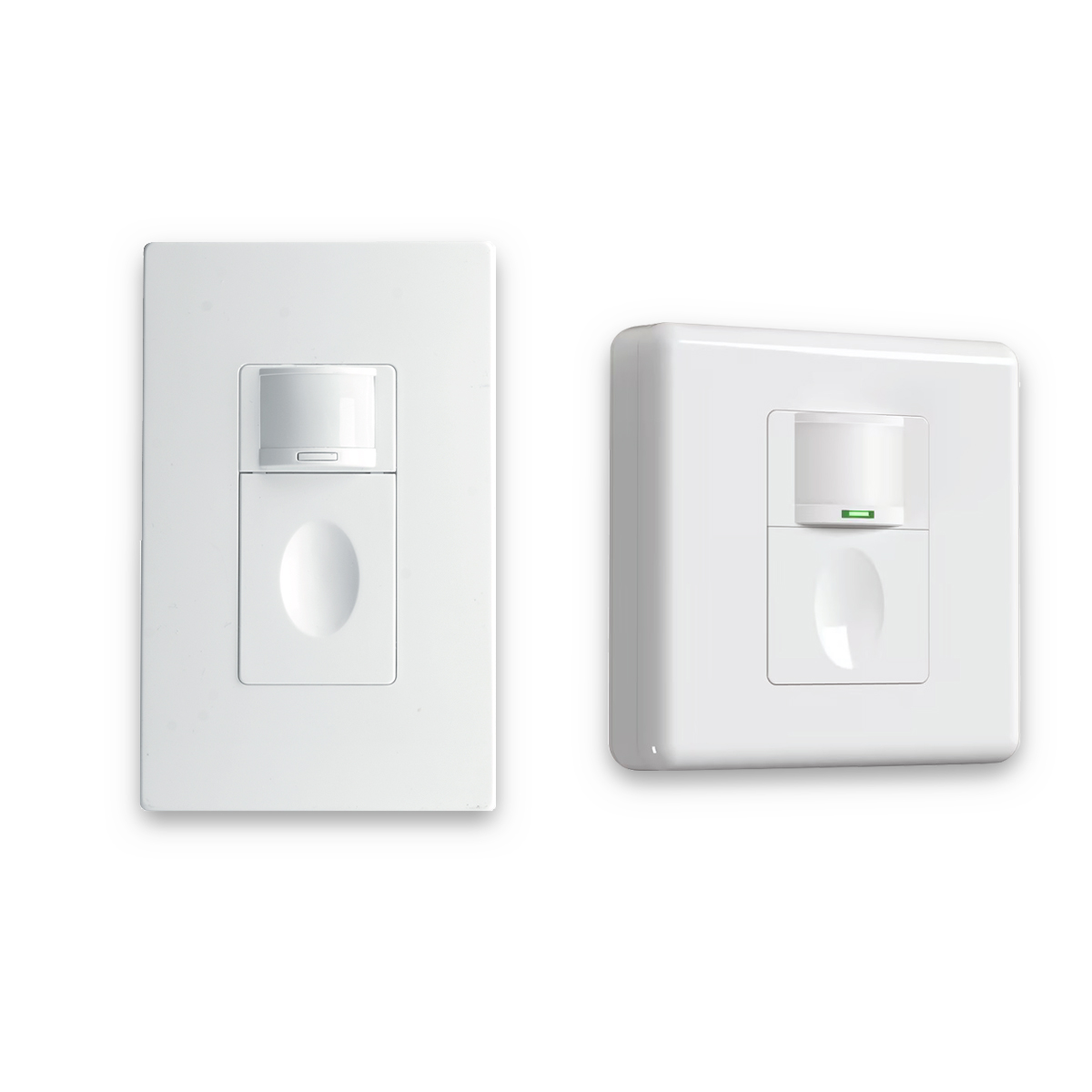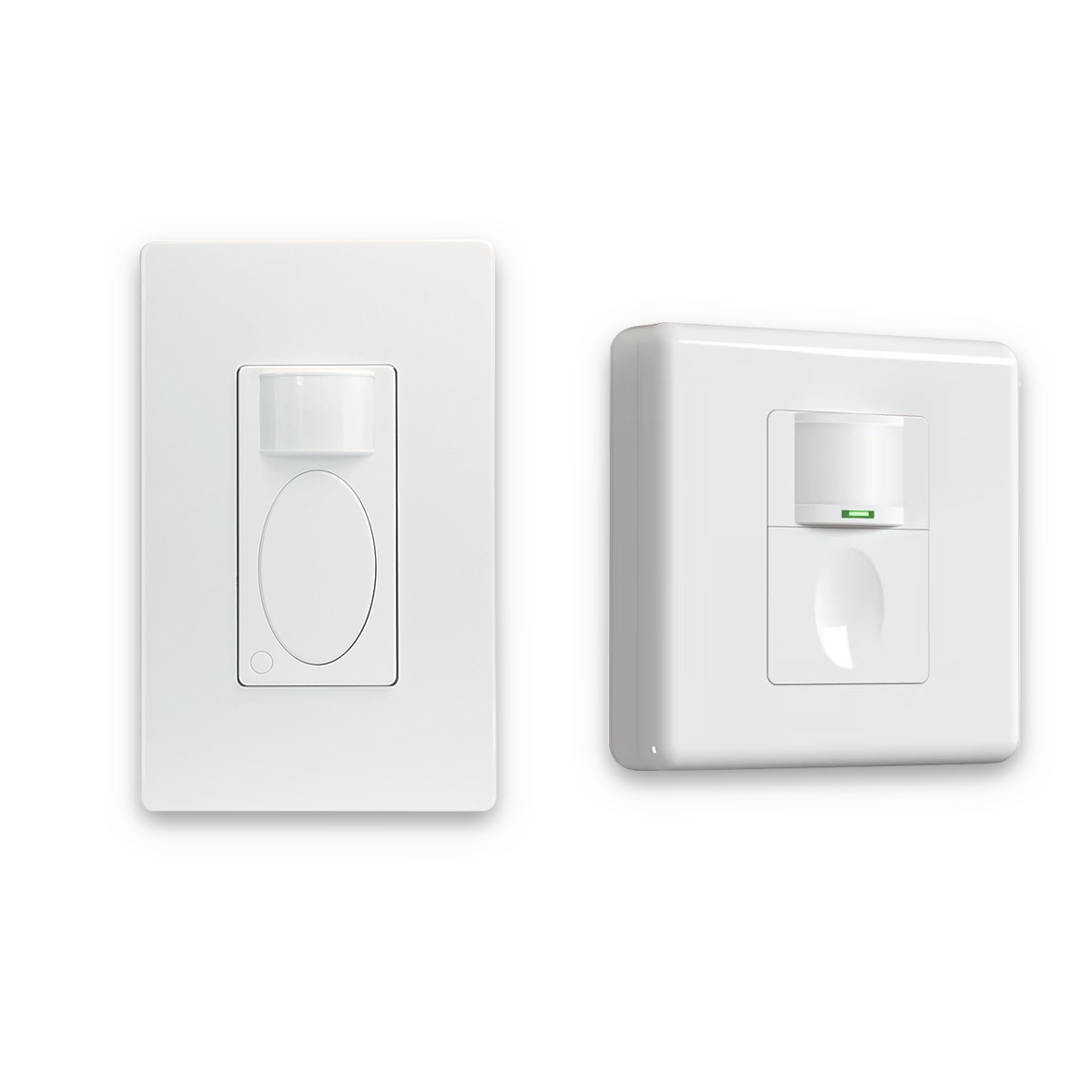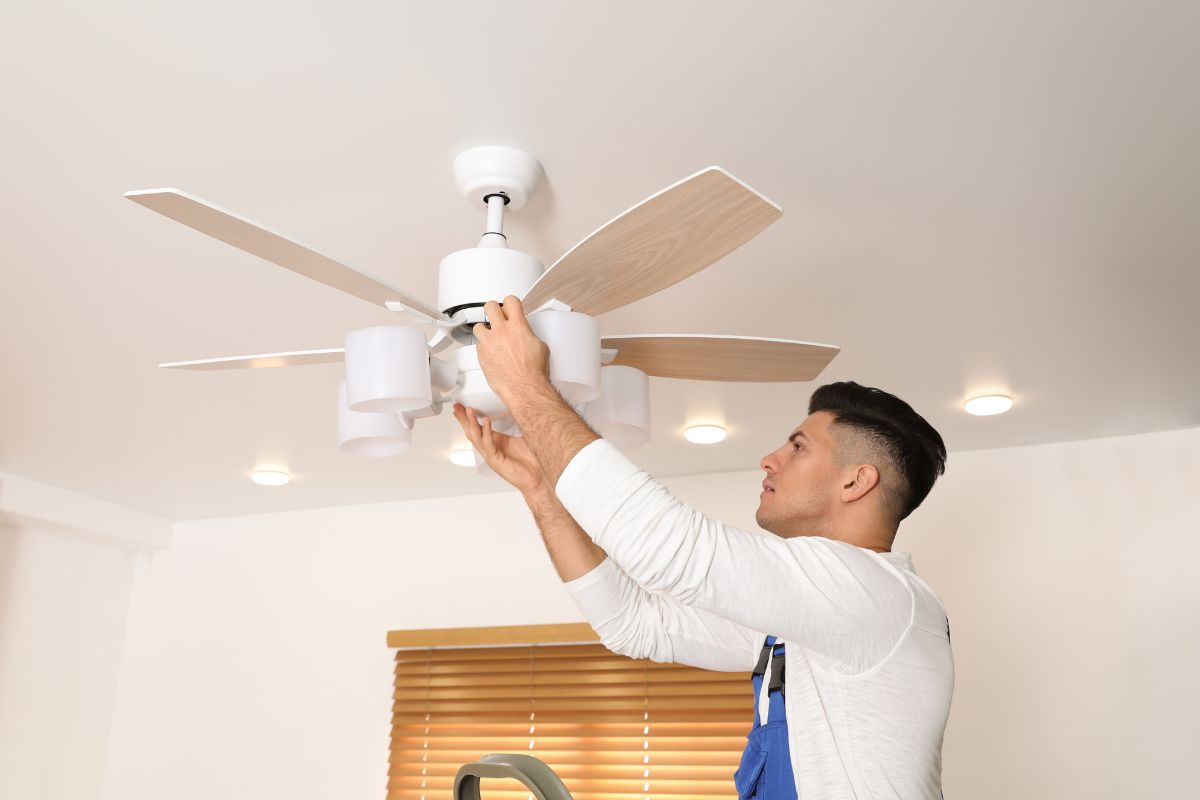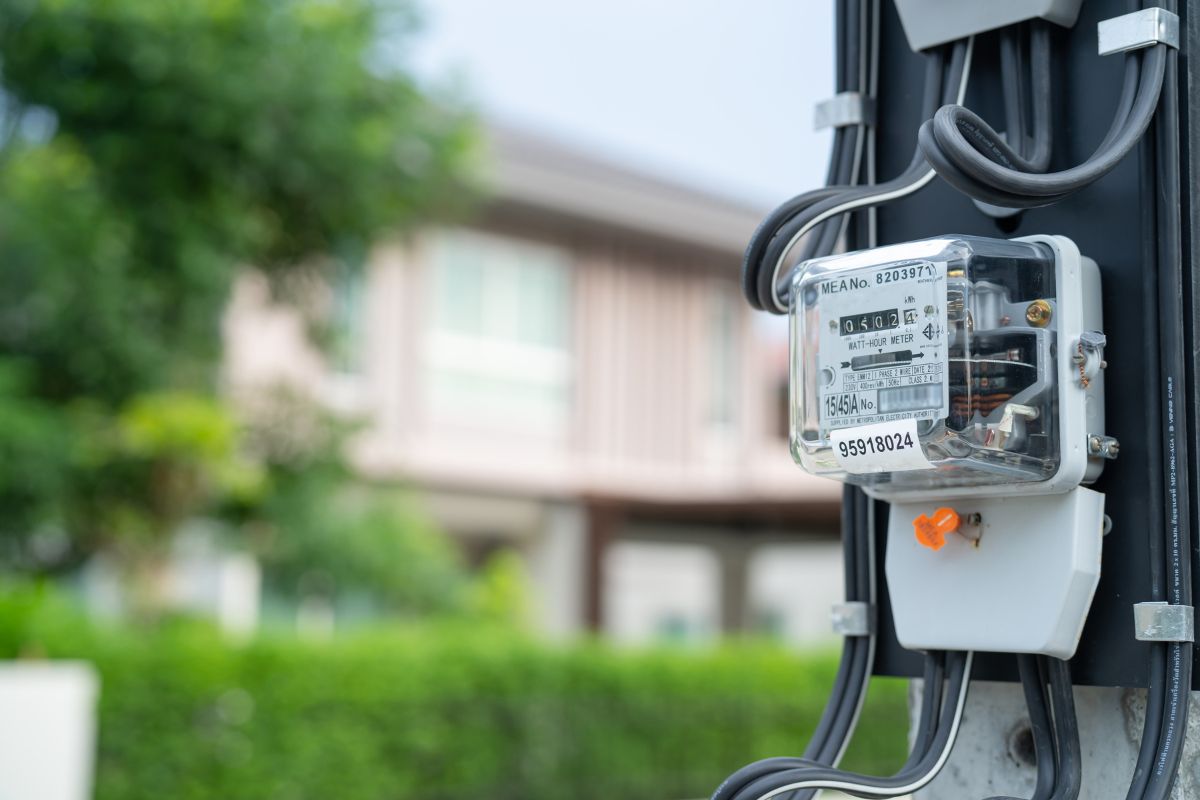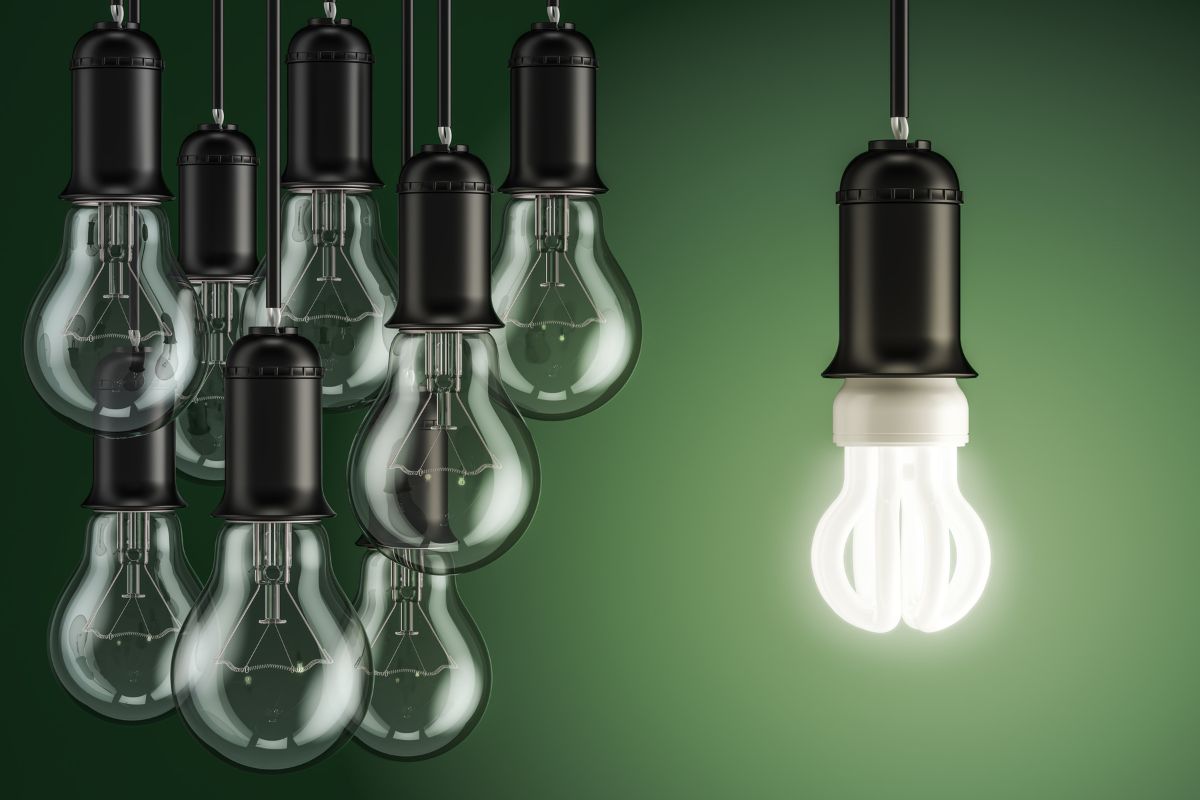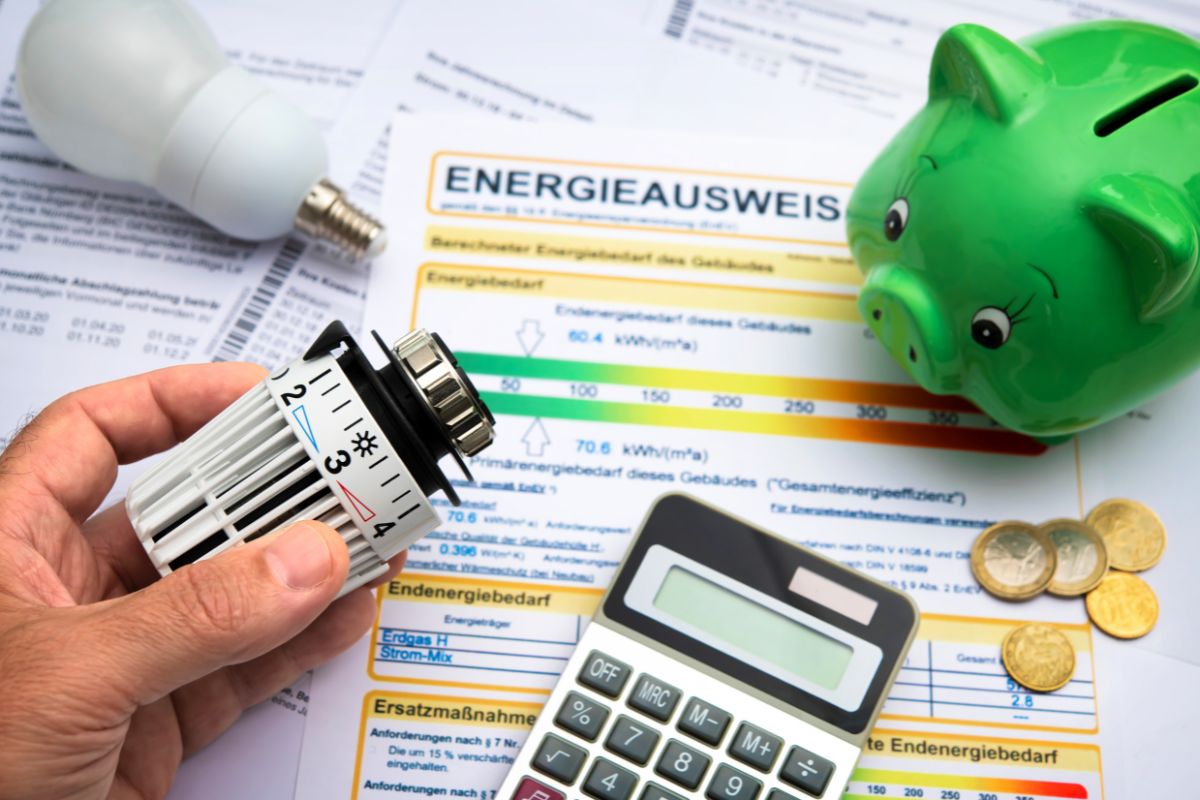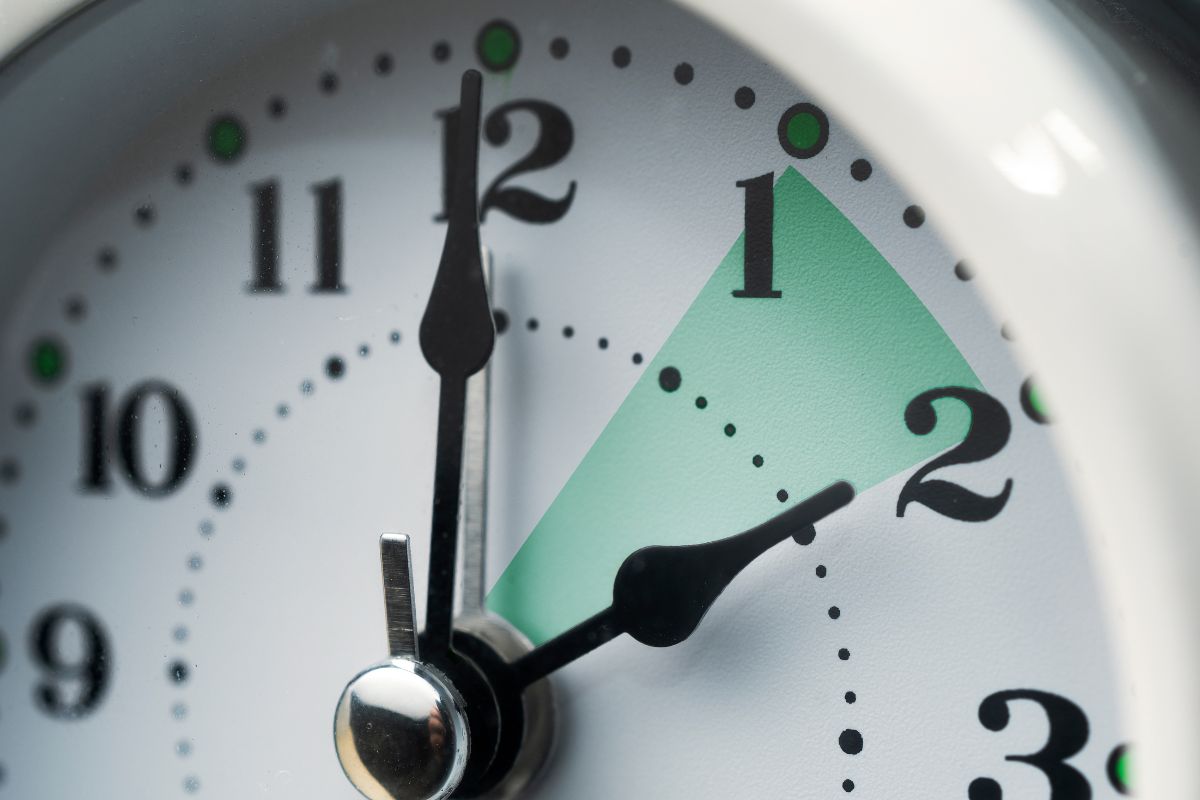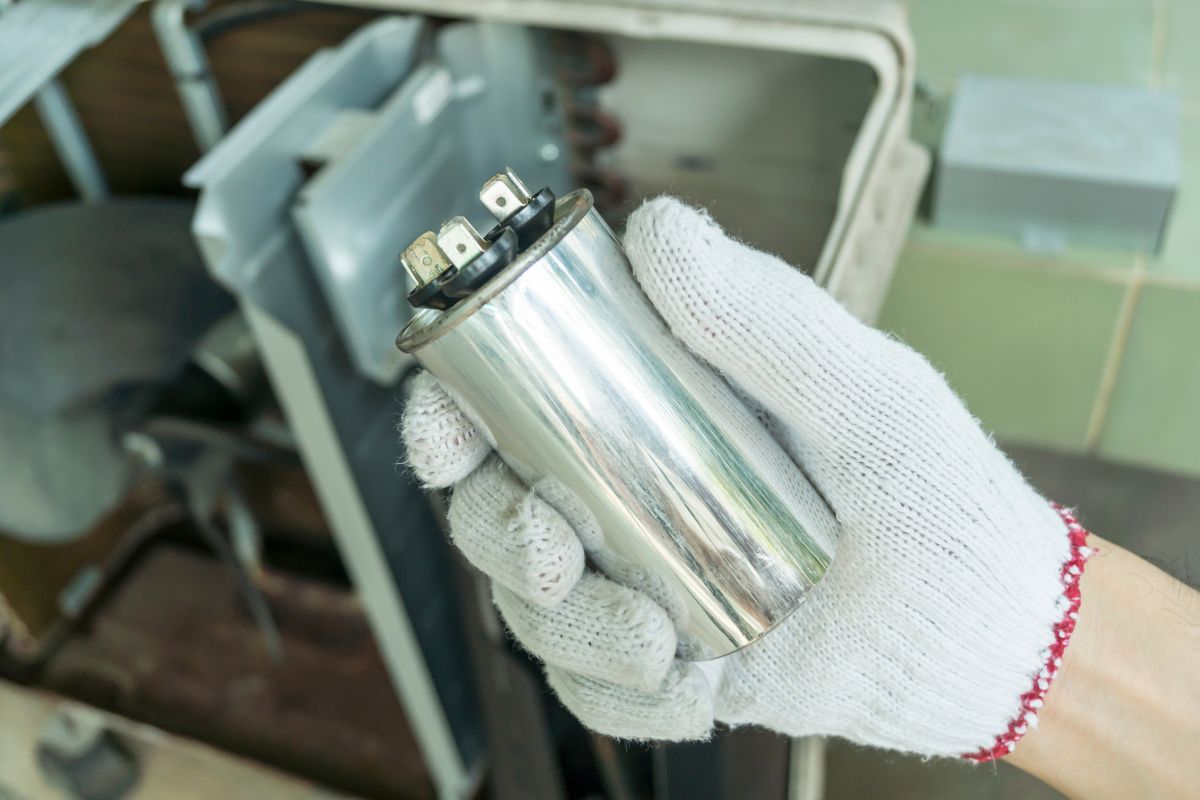수은주가 상승하고 전국적으로 에어컨이 윙윙거리면서 필연적으로 질문이 떠오릅니다: 여름철 최적의 온도 설정은 무엇일까요?
이는 단순한 편안함을 넘어 에너지 효율성, 환경적 책임, 수면의 질까지 고려하는 질문입니다.
여름철에 최적의 온도 조절기 설정은 무엇인가요?
무더운 여름철에 온도 조절기를 설정할 때 쾌적함과 에너지 효율성 사이의 적정점을 찾는 것은 섬세한 균형 잡기처럼 느껴질 수 있습니다. 그렇다면 마법의 숫자는 무엇일까요?
미국 에너지부는 여름철에 집에 있을 때와 깨어 있을 때 온도 조절기를 78°F(26°C)로 설정할 것을 권장합니다. 그런데 왜 이 특정 온도를 설정해야 할까요?
첫째, 78°F는 쾌적함과 에너지 효율 사이에 균형을 이룹니다. 이 온도에서는 대부분의 사람들이 에어컨 시스템을 과도하게 사용하지 않고도 쾌적한 실내 환경을 유지할 수 있습니다. 온도 조절기를 72°F 이상으로 1도 올릴 때마다 냉방 비용을 최대 3%까지 절약할 수 있다는 점에 유의하세요. 즉, 온도 조절기를 72°F가 아닌 78°F로 설정하면 에너지 요금을 최대 18%까지 절약할 수 있습니다!
그러나 쾌적함은 주관적인 것이기 때문에 어떤 사람에게는 쾌적하게 느껴지는 온도가 다른 사람에게는 너무 따뜻할 수 있습니다. 습도 수준, 공기 순환, 개인의 생리와 같은 요인은 모두 우리가 온도를 인식하는 방식에 영향을 미칩니다. 여기서 '열적 쾌적함'이라는 개념이 중요한데, 이는 온도 조절기의 숫자가 아니라 환경이 사용자에게 어떻게 느껴지는지에 관한 것입니다.
처음에 78°F가 너무 덥다고 느껴지더라도 절망하지 마세요. 우리 몸은 다양한 온도에 적응하는 놀라운 능력을 가지고 있습니다. 매일 온도 조절기 설정을 1도씩 서서히 높여보세요. 이렇게 천천히 조절하면 편안함을 잃지 않으면서도 몸이 적응할 수 있습니다.
또한 78°F 권장 온도는 모든 경우에 적용되는 일률적인 해결책이 아니라는 점도 알아둘 필요가 있습니다. 다음과 같은 요인에 따라 조정해야 할 수도 있습니다:
- 습도 수준: 습도가 높으면 실내가 실제보다 더 따뜻하게 느껴질 수 있습니다. 습한 기후에 거주하는 경우 온도 조절기를 약간 낮게 설정하거나 제습기에 투자해야 할 수도 있습니다.
- 주택 단열: 단열이 잘 된 집은 시원한 공기를 더 잘 유지하므로 온도 조절기를 더 높게 설정할 수 있습니다.
- 햇빛 노출: 직사광선을 많이 받는 집은 쾌적함을 유지하기 위해 온도를 낮게 설정해야 할 수 있습니다.
- 개인적인 요인: 연령, 건강 상태, 활동 수준은 모두 선호하는 온도에 영향을 미칠 수 있습니다.
목표는 에너지 소비를 최소화하면서 쾌적함을 유지할 수 있는 온도를 찾는 것임을 기억하세요. 권장 설정에서 1~2도 범위 내에서 실험해보고 나와 내 가족에게 가장 적합한 온도를 찾는 것을 두려워하지 마세요.
여름철 집을 비울 때 온도 조절기를 설정하는 방법
외출을 하거나 여름 휴가를 떠날 때 온도 조절기를 조절하면 에너지를 크게 절약할 수 있습니다. 하지만 어느 정도 높이 설정해야 하고 그 이유는 무엇일까요?
미국 에너지부는 장기간 집을 비울 때는 온도 조절기를 85°F(29°C) 이상으로 설정할 것을 권장합니다. 이 권장 사항은 의외로 높아 보일 수 있지만 그 배경에는 타당한 이유가 있습니다.
먼저, 에어컨은 집 안을 시원하게 해줄 뿐만 아니라 습기도 제거해준다는 사실을 이해하는 것이 중요합니다. 외출할 때 온도 조절기를 85°F로 설정하면 에어컨을 가끔씩 작동시켜 습도 수준을 조절하고 곰팡이 번식과 같은 문제를 예방하는 데 도움이 됩니다.
하지만 에어컨을 완전히 끄면 어떨까요? 직관적이지 않은 것처럼 보일 수 있지만, 에어컨을 완전히 끄면 실제로 집에 돌아왔을 때 에너지 소비가 더 늘어날 수 있습니다. 그 이유는 다음과 같습니다:
1. 습기 축적: 많은 기후에서 습도가 조절되지 않는 공간에는 습기가 빠르게 축적되어 곰팡이 및 곰팡이 문제가 발생할 수 있습니다.
2. 극심한 더위: 냉방 장치 없이 집안이 크게 뜨거워져 열에 민감한 물품이나 전자제품이 손상될 수 있습니다.
3. 에너지 급증: 외출에서 돌아와 에어컨을 다시 켜면 매우 더운 집을 식히기 위해 초과 근무를 해야 하므로 계속 높은 온도를 유지했을 때보다 더 많은 에너지를 사용할 수 있습니다.
그렇다면 집을 비울 때 온도 조절기를 올리면 얼마나 절약할 수 있을까요? 평소 설정보다 온도를 1도 올릴 때마다 약 2~3%의 냉방비를 절약할 수 있습니다. 즉, 일반적으로 집에 있을 때 집 온도를 78°F로 유지했다면 외출할 때 85°F로 올리면 해당 기간 동안 냉방비를 약 14~21% 절약할 수 있습니다.
프로그래밍 가능 또는 스마트 온도 조절기가 있는 경우, 일반적으로 집을 비울 때 자동으로 온도를 조정하는 일정을 쉽게 설정할 수 있습니다. 일부 스마트 온도조절기는 지오펜싱을 사용하여 사용자가 집을 나간 시간을 감지하고 그에 따라 조정하기도 합니다.
집에서 반려동물을 키우는 경우, 이 전략을 조정해야 할 수도 있습니다. 많은 반려동물이 80~85°F까지 견딜 수 있지만, 반려동물의 특정 요구 사항을 고려하고 확실하지 않은 경우 수의사와 상담하는 것이 중요합니다.
하지만 외출할 때마다 수동으로 에어컨을 조절하는 것은 번거로울 수 있습니다. 이 과정을 자동화하여 필요할 때만 에어컨이 작동하도록 할 수 있는 방법이 있다면 좋지 않을까요? RZ050 에어컨 모션 센서 컨트롤러와 같은 스마트 기기가 바로 이런 경우에 유용합니다. 방에서 나가면 자동으로 에어컨을 꺼주어 별도의 노력 없이도 에너지 절약을 극대화할 수 있습니다.
외출을 하거나 여름 휴가를 떠날 때 온도 조절기를 조절하면 에너지를 크게 절약할 수 있습니다. 하지만 어느 정도 높이 설정해야 하고 그 이유는 무엇일까요?
미국 에너지부는 장기간 집을 비울 때는 온도 조절기를 85°F(29°C) 이상으로 설정할 것을 권장합니다. 이 권장 사항은 의외로 높아 보일 수 있지만 그 배경에는 타당한 이유가 있습니다.
먼저, 에어컨은 집 안을 시원하게 해줄 뿐만 아니라 습기도 제거해준다는 사실을 이해하는 것이 중요합니다. 외출할 때 온도 조절기를 85°F로 설정하면 에어컨을 가끔씩 작동시켜 습도 수준을 조절하고 곰팡이 번식과 같은 문제를 예방하는 데 도움이 됩니다.
하지만 에어컨을 완전히 끄면 어떨까요? 직관적이지 않은 것처럼 보일 수 있지만, 에어컨을 완전히 끄면 실제로 집에 돌아왔을 때 에너지 소비가 더 늘어날 수 있습니다. 그 이유는 다음과 같습니다:
- 습기 축적: 많은 기후에서 습도가 조절되지 않는 공간에는 습기가 빠르게 축적되어 곰팡이 및 곰팡이 문제가 발생할 수 있습니다.
- 극심한 더위: 냉방 장치 없이 집 안이 크게 뜨거워져 열에 민감한 물품이나 전자제품이 손상될 수 있습니다.
- 에너지 급증: 집에 돌아와서 에어컨을 다시 켜면 매우 더운 집을 식히기 위해 초과 근무를 해야 하므로 계속 높은 온도를 유지했을 때보다 더 많은 에너지를 사용할 수 있습니다.
그렇다면 집을 비울 때 온도 조절기를 올리면 얼마나 절약할 수 있을까요? 평소 설정보다 온도를 1도 올릴 때마다 약 2~3%의 냉방비를 절약할 수 있습니다. 즉, 일반적으로 집에 있을 때 집 온도를 78°F로 유지했다면 외출할 때 85°F로 올리면 해당 기간 동안 냉방비를 약 14~21% 절약할 수 있습니다.
프로그래밍 가능 또는 스마트 온도 조절기가 있는 경우, 일반적으로 집을 비울 때 자동으로 온도를 조정하는 일정을 쉽게 설정할 수 있습니다. 일부 스마트 온도조절기는 지오펜싱을 사용하여 사용자가 집을 나간 시간을 감지하고 그에 따라 조정하기도 합니다.
집에서 반려동물을 키우는 경우, 이 전략을 조정해야 할 수도 있습니다. 많은 반려동물이 80~85°F까지 견딜 수 있지만, 반려동물의 특정 요구 사항을 고려하고 확실하지 않은 경우 수의사와 상담하는 것이 중요합니다.
하지만 외출할 때마다 에어컨을 수동으로 조정하는 것은 번거로울 수 있습니다. 이 과정을 자동화할 수 있는 방법이 있다면 얼마나 좋을까요? 필요할 때만 에어컨이 작동하도록 보장합니다.? RZ050 에어컨 모션 센서와 같은 스마트 기기의 역할이 바로 여기에 있습니다. 방에서 나가면 자동으로 에어컨을 끄기 때문에 별도의 노력 없이도 에너지 절약을 극대화할 수 있습니다.
RZ050 에어컨 모션 센서 컨트롤러
방에서 나가면 자동으로 에어컨을 끄고 손쉽게 에너지를 절약하세요.
- 방이 비어 있으면 자동으로 에어컨을 끕니다.
- AC 에너지 요금을 최대 20%-50%까지 절약하세요.
- 대부분의 분할형 AC 장치와 호환되는 간편한 DIY 설치.
여름철 수면에 가장 적합한 온도 조절기 설정은 무엇인가요?
적절한 온도 조절기 설정을 찾는 것은 더운 여름철에 숙면을 취하는 데 큰 차이를 만들 수 있습니다.
미국수면재단은 최적의 수면을 위해 침실 온도를 60~67°F(15.6~19.4°C) 사이로 유지할 것을 권장합니다. 이는 특히 낮에 권장하는 온도와 비교하면 의외로 시원해 보일 수 있지만, 그 배경에는 확실한 과학적 근거가 있습니다.
수면을 준비하면서 체온은 자연스럽게 떨어지고 이른 아침 시간에 가장 낮은 지점에 도달합니다. 이러한 심부 체온의 감소는 우리 뇌가 잠을 잘 시간이라는 중요한 신호입니다. 수면 환경을 시원하게 유지함으로써 이러한 자연스러운 과정을 돕고 우리 몸이 더 쉽게 깊은 수면에 들어가고 회복력을 유지할 수 있도록 돕습니다.
하지만 대부분의 사람들에게 60~67°F가 이상적인 온도 범위이지만, 개인마다 선호하는 온도는 다를 수 있습니다. 최적의 수면 온도에 영향을 미칠 수 있는 몇 가지 요인은 다음과 같습니다:
동작 인식 에너지 절약 솔루션을 찾고 계신가요?
전체 PIR 모션 센서, 모션 인식 에너지 절약 제품, 모션 센서 스위치, 재실/공실 상업용 솔루션에 대해 문의하세요.
- 연령: 노년층은 약간 따뜻한 수면 온도를 선호하는 경우가 많습니다.
- 체성분: 체지방이 많은 사람은 더 시원한 온도를 선호하는 경향이 있습니다.
- 호르몬 변화: 폐경기를 겪는 여성은 안면 홍조로 인해 더 시원한 온도를 선호할 수 있습니다.
- 침구: 매트리스, 시트, 잠옷의 종류에 따라 따뜻하거나 시원한 느낌에 영향을 줄 수 있습니다.
온도 조절기를 60~67°F로 설정하는 것이 너무 시원해 보이거나 너무 비싸게 느껴지더라도 걱정하지 마세요. 에어컨을 틀지 않고도 쾌적한 수면 환경을 조성할 수 있는 방법이 있습니다:
- 통기성이 좋은 침구를 사용하세요: 면이나 대나무와 같은 통기성이 좋은 천연 소재로 만든 시트와 잠옷을 선택하세요.
- 선풍기 활용하기: 천장 선풍기나 휴대용 선풍기로 시원한 바람을 만들어 실내를 4~5도 더 시원하게 만들 수 있습니다.
- '쿨링' 매트리스나 베개를 고려하세요: 일부 매트리스와 베개는 체온을 더 효과적으로 발산하도록 설계되었습니다.
- "네 기둥" 요령 사용: 네 기둥 침대 위에 가벼운 시트를 걸거나 캐노피를 즉석에서 설치하여 침대 주변에 시원한 미기후를 조성하세요.
최적의 여름철 냉방을 위한 스마트 및 프로그래밍 가능 온도 조절기 활용하기
에너지 효율적인 여름철 냉방을 위해 스마트하고 프로그래밍 가능한 온도 조절기가 강력한 지원군으로 등장했습니다. 하지만 이러한 첨단 기기가 에너지를 절약하면서 시원함을 유지하는 데 정확히 어떻게 도움이 될까요?
스마트 온도 조절기는 사용자의 일정과 선호도를 학습하여 자동으로 온도를 조절하여 쾌적함과 에너지 효율을 최적화하도록 설계되었습니다. 집의 냉방 전략을 크게 향상시킬 수 있는 다양한 기능을 제공합니다:
- 학습 기능: Nest 학습 온도조절기와 같은 많은 스마트 온도조절기는 시간이 지남에 따라 사용자의 습관을 관찰하고 일반적으로 집, 외출 또는 수면 시간을 기반으로 맞춤형 일정을 생성합니다.
- 원격 제어: 스마트폰 앱으로 어디서나 집안의 온도를 조절할 수 있습니다. 더운 날 일찍 집에 가나요? 도착하기 전에 집안 냉방을 시작할 수 있습니다.
- 지오펜싱: 일부 모델은 스마트폰의 위치를 사용하여 사용자가 집을 나갔거나 돌아오는 시간을 파악하고 그에 따라 온도를 조정합니다.
- 에너지 보고서: 많은 스마트 온도조절기가 에너지 사용량에 대한 자세한 보고서를 제공하여 패턴과 절약 기회를 파악하는 데 도움을 줍니다.
- 다른 스마트 홈 디바이스와의 통합: 예를 들어, 스마트 블라인드와 연동하여 하루 중 가장 더운 시간대에 블라인드를 낮춰 에어컨의 냉방 부하를 줄일 수 있습니다.
- 유지 관리 알림: 일부 모델에서는 공기 필터를 교체하거나 HVAC 유지보수 일정을 예약할 시기를 알려주는 기능이 있습니다.
하지만 이러한 기능이 실제로 얼마나 절약할 수 있을까요? 에너지 스타에 따르면 프로그래밍 가능한 온도 조절기를 제대로 사용하면 연간 약 $180의 난방 및 냉방 비용을 절약할 수 있다고 합니다. 고급 기능을 갖춘 스마트 온도조절기를 사용하면 더 많은 비용을 절약할 수 있습니다.
스마트 온도 조절기를 선택할 때는 다음과 같은 요소를 고려하세요:
- HVAC 시스템과의 호환성
- 설치 및 사용의 용이성
- 라이프스타일에 유용한 추가 기능
- 소유하고 있거나 구매 예정인 다른 스마트 홈 디바이스와의 통합
최적의 냉각과 쾌적함을 위한 습도 관리
온도는 방정식의 일부일 뿐입니다. 습도는 우리가 온도를 인지하는 방식에 결정적인 영향을 미치며 냉각 시스템의 효율성에 큰 영향을 미칠 수 있습니다.
습도는 공기 중 수증기의 양을 말합니다. 습도가 높으면 우리 몸의 자연적인 냉각 메커니즘인 땀 배출의 효과가 떨어지기 때문에 실내가 실제보다 더 덥게 느껴질 수 있습니다. 공기가 이미 수분으로 포화 상태이면 피부에서 땀이 쉽게 증발하지 않아 덥고 끈적끈적한 느낌을 받게 됩니다.
여기서 '체감 온도'의 개념이 작용합니다. 습한 날에는 온도가 78도일지라도 습도 때문에 85도 이상으로 느껴질 수 있습니다. 이는 쾌적성에 영향을 미칠 뿐만 아니라 온도 조절기를 더 낮게 설정하여 에너지 소비를 증가시킬 수 있습니다.
그렇다면 여름철 쾌적함을 위한 이상적인 실내 습도는 어느 정도일까요? 환경 보호국에서는 실내 습도를 30%에서 50% 사이로 유지할 것을 권장합니다. 이 범위는 습도가 높은 환경에서 번성하는 곰팡이 및 집먼지 진드기 감염과 같은 문제를 예방하는 동시에 쾌적함을 유지하는 데 도움이 됩니다.
다음은 실내 습도 관리를 위한 몇 가지 전략입니다:
- 제습기를 사용하세요: 특히 습한 기후에서는 독립형 제습기가 큰 도움이 될 수 있습니다. 제습기는 공기 중의 과도한 수분을 제거하여 에어컨이 제습이 아닌 냉방에 집중할 수 있게 해줍니다.
- 적절한 에어컨 크기를 확인하세요: 크기가 큰 에어컨은 집 안을 빠르게 식혀주지만 습기를 효과적으로 제거할 만큼 충분히 오래 작동하지 않을 수 있습니다. 적절한 크기의 장치는 더 긴 주기로 작동하여 공기에서 더 많은 습기를 제거합니다.
- 배기 팬을 사용하세요: 요리하거나 샤워할 때는 배기 팬을 사용해 과도한 습기를 원천적으로 제거하세요.
- 누수를 즉시 해결하세요: 작은 누수라도 시간이 지나면 실내 습도가 크게 높아질 수 있습니다.
- 집 전체 제습기를 고려해 보세요: 습도가 매우 높은 기후의 가정에서는 HVAC 시스템과 통합된 집안 전체 제습기를 사용하면 종합적인 습도 제어가 가능합니다.
- 에어컨의 '건조' 모드를 사용하세요: 많은 최신 에어컨에는 냉방보다는 제습에 초점을 맞춘 건식 모드가 있습니다.
선풍기 및 환기를 통한 집안 냉방 개선
여름철 냉방을 위해 에어컨을 사용하는 경우가 많은데, 선풍기와 환기 장치를 전략적으로 사용하면 에너지 소비를 줄이면서 냉방 효과를 크게 높일 수 있습니다.
관심 있는 분야
선풍기는 실제로 실내 온도를 낮추지 않습니다. 대신 피부에서 수분의 증발을 증가시켜 더 시원함을 느끼게 하는 바람 냉기 효과를 만들어냅니다. 이렇게 하면 실내 온도를 4~8도 정도 낮출 수 있으므로 쾌적함을 유지하면서 온도 조절기를 더 높게 설정할 수 있습니다.
집안 냉방을 개선하기 위해 선풍기를 사용하는 몇 가지 효과적인 방법을 소개합니다:
- 천장 선풍기: 여름에는 천장 선풍기가 시계 반대 방향으로 회전하는지 확인하세요. 이렇게 하면 공기를 똑바로 아래로 밀어내어 시원한 바람이 만들어집니다. 선풍기는 공간이 아닌 사람을 시원하게 해주는 것이므로 방을 나갈 때는 반드시 끄세요.
- 창문 선풍기: 창문 선풍기를 전략적으로 사용하여 교차 환기를 유도하세요. 집의 가장 따뜻한 쪽 창문은 바깥쪽을 향하게 하고 가장 시원한 쪽은 안쪽을 향하게 하여 선풍기를 배치하세요.
- 집 전체 선풍기: 일반적으로 다락에 설치하는 이 강력한 선풍기는 열린 창문을 통해 시원한 공기를 빠르게 끌어들이고 다락 통풍구를 통해 더운 공기를 배출할 수 있습니다. 특히 실외 온도가 내려가는 저녁에 집안을 시원하게 하는 데 효과적입니다.
- 휴대용 선풍기: 휴대용 선풍기: 가장 많은 시간을 보내는 공간에 개인용 쿨링 존을 만드는 데 사용하세요.
- 욕실 및 주방 배기 팬: 열과 습기를 원천적으로 제거하여 에어컨의 부하를 줄이는 데 도움이 됩니다.
환기는 효율적인 집안 냉방을 위한 또 다른 핵심 요소입니다. 적절한 환기는 뜨겁고 오래된 공기를 제거하고 더 시원하고 신선한 공기로 교체하는 데 도움이 됩니다. 다음은 고려해야 할 몇 가지 환기 전략입니다:
- 야간 플러싱: 시원한 밤에는 창문을 열어 시원한 공기를 유입하고 선풍기를 사용해 집안 전체에 공기를 순환시킵니다. 아침에는 창문과 블라인드를 닫아 시원한 공기를 집 안에 가둬두세요.
- 다락방 환기: 다락에 열이 쌓여 생활 공간으로 방출되는 것을 방지하기 위해 다락을 적절히 환기하세요.
- 자연 환기: 자연적인 기류를 활용할 수 있도록 집을 설계하거나 가구를 배치하세요. 예를 들어, 집의 서늘한 쪽 창문에서 따뜻한 쪽 창문으로 통하는 통로를 만들 수 있습니다.
여름철 냉방을 위한 적절한 단열과 밀폐의 중요성
단열재는 열의 흐름을 막는 장벽 역할을 합니다. 겨울에는 따뜻한 공기를 내부로 유지하지만 여름에는 뜨거운 공기를 외부로 내보냅니다. 적절한 단열재는 벽, 지붕, 바닥을 통해 집으로 들어오는 열의 양을 크게 줄여 에어컨 시스템의 작업 부하를 줄일 수 있습니다.
반면, 에어 씰링은 공기가 새어 들어올 수 있는 집 외피의 틈, 균열, 구멍을 막는 것입니다. 여름에는 이러한 틈새를 통해 뜨거운 실외 공기가 스며들고 시원한 냉방 공기가 빠져나갈 수 있습니다. 이로 인해 집안의 쾌적성이 떨어질 뿐만 아니라 에어컨이 더 열심히 작동하여 에너지 소비가 증가합니다.
그렇다면 단열 및 밀폐 효과를 극대화하려면 어디에 집중해야 할까요? 다음은 고려해야 할 몇 가지 주요 영역입니다:
- 다락방: 다락은 단열이 가장 중요한 공간입니다. 여름철 다락은 150°F 이상의 온도에 도달할 수 있습니다. 적절한 단열재는 이러한 극심한 열기와 생활 공간 사이에 장벽을 만들어줍니다.
- 벽: 외벽 단열은 여름철(그리고 겨울철)에 열을 차단하는 데 도움이 됩니다.
- 바닥: 거실 아래에 난방이 되지 않는 공간(예: 크롤링 공간이나 미완성 지하실)이 있는 경우, 바닥을 단열하면 열 전달을 방지할 수 있습니다.
- 창문과 문: 창문과 문은 공기 누출의 일반적인 원인입니다. 웨더스트립과 코킹은 공기 침투를 크게 줄일 수 있습니다.
- 덕트: 덕트: 특히 에어컨이 없는 공간의 덕트를 단열하고 밀폐하면 집 안을 통과하는 시원한 공기가 손실되는 것을 방지할 수 있습니다.
적절한 단열과 공기 밀폐의 이점은 상당합니다:
- 에너지 절약: 미국 에너지부는 주택 소유자가 집을 단열하고 다락방, 크롤링 공간 위 바닥, 접근 가능한 지하실 림 장선에 단열재를 추가함으로써 난방 및 냉방 비용을 평균 15%(또는 총 에너지 비용 평균 11%)를 절약할 수 있다고 추정합니다.
- 쾌적성 향상: 여름철 열 손실을 줄임으로써 단열과 공기 밀폐가 실내 온도를 보다 일정하게 유지하는 데 도움이 됩니다.
- 실내 공기질 개선: 에어실링은 실외 오염 물질, 알레르기 유발 물질, 습기가 집안으로 유입되는 것을 방지할 수 있습니다.
- HVAC 효율성 향상: 집이 단열과 밀폐가 잘 되어 있으면 HVAC 시스템이 열심히 일할 필요가 없어 수명이 연장될 수 있습니다.
단열재를 고려할 때는 R-값의 개념을 이해하는 것이 중요합니다. R-값은 단열재의 열 흐름에 대한 저항을 측정하는 수치로, R-값이 높을수록 단열재가 더 효과적입니다. 집에 적합한 최적의 R값은 기후대와 단열 대상 면적에 따라 달라집니다.
공기 밀봉의 경우 일반적인 방법은 다음과 같습니다:
- 코킹: 1/4인치 미만의 균열 및 틈새를 밀봉하는 데 사용됩니다.
- 웨더스트립: 문이나 창문과 같이 움직이는 부품을 밀봉하는 데 이상적입니다.
- 스프레이 폼: 큰 간격과 불규칙한 공간에 효과적입니다.
일부 단열 및 기밀 프로젝트는 DIY가 가능하지만, 다른 프로젝트는 전문가의 전문 지식이 필요할 수 있습니다. 가정 에너지 감사는 집의 에너지 손실이 발생하는 부분을 파악하고 단열 및 밀폐 노력을 안내하는 데 도움이 될 수 있습니다.
최고 효율을 위한 에어컨 유지 관리하기
에어컨 시스템은 복잡한 기계이며, 다른 기계와 마찬가지로 최고의 효율로 작동하려면 정기적인 유지보수가 필요합니다. 정기적인 에어컨 유지보수는 몇 가지 중요한 이점을 제공합니다:
- 에너지 효율: 잘 관리된 에어컨은 집안 냉방에 더 적은 에너지를 사용하므로 공공요금이 절감됩니다.
- 성능 향상: 정기적인 유지보수를 통해 에어컨을 더 효과적이고 일관되게 냉각할 수 있습니다.
- 수명 연장: 적절한 관리를 통해 에어컨의 수명을 크게 연장하여 값비싼 교체 시기를 늦출 수 있습니다.
- 더 나은 공기질: 깨끗한 필터와 코일은 집 안의 공기가 더 깨끗하게 순환한다는 것을 의미합니다.
- 수리 횟수 감소: 정기적인 유지보수를 통해 작은 문제가 큰 문제가 되기 전에 발견하여 예기치 않은 고장이 발생할 가능성을 줄일 수 있습니다.
그렇다면 적절한 AC 유지보수에는 어떤 것들이 필요할까요? 다음은 몇 가지 주요 작업입니다:
- 공기 필터를 정기적으로 교체하거나 청소하세요: 이것은 아마도 가장 중요한 유지 관리 작업일 것입니다. 필터가 더러우면 공기 흐름이 제한되어 에어컨이 더 열심히 작동하게 됩니다. 냉방 시즌에는 1~3개월마다 필터를 교체하거나 청소하는 것을 목표로 하세요.
- 콘덴서 및 증발기 코일을 청소하세요: 시간이 지남에 따라 이러한 코일은 먼지와 이물질이 쌓여 열을 효과적으로 전달하는 능력이 저하될 수 있습니다. 매년 청소하면 에어컨의 효율을 크게 향상시킬 수 있습니다.
- 응축수 배수구를 점검하고 청소하세요: 배수구가 막히면 물이 손상되어 에어컨의 습도 조절 기능에 영향을 줄 수 있습니다.
- 송풍기 부품을 점검하고 청소하세요: 이렇게 하면 시스템 전체에 적절한 공기 흐름을 보장할 수 있습니다.
- 냉매 잔량을 확인하세요: 냉매가 부족하면 냉매가 누출되어 에어컨의 효율이 크게 떨어질 수 있습니다.
- 전기 연결부를 점검합니다: 연결부를 조이고 필요한 경우 비전도성 코팅을 적용합니다.
- 움직이는 부품에 윤활유를 바릅니다: 모터의 마찰을 줄이고 과열을 방지하는 데 도움이 될 수 있습니다.
이러한 작업 중 일부는 DIY 프로젝트가 될 수 있지만 다른 작업은 전문적인 지식이 필요합니다. 일반적으로 1년에 한 번 이상, 가급적 냉방 시즌이 시작되기 전에 전문 HVAC 기술자에게 철저한 유지보수 점검을 받는 것이 좋습니다.
전문 유지보수를 예약할 때는 ENERGY STAR® 유지보수 체크리스트를 따르는 기술자를 찾아보세요. 이 포괄적인 목록은 시스템의 모든 중요 구성 요소를 검사하고 서비스할 수 있도록 보장합니다.
개별 상황에 맞게 온도 조절기 설정 조정하기
실제로 최적의 설정은 개별 상황에 따라 크게 달라질 수 있습니다.
- 홈 특성:
- 단열 품질: 단열이 잘 된 집은 시원한 공기를 더 잘 유지하므로 온도 조절기를 더 높게 설정할 수 있습니다.
- 햇빛 노출: 직사광선이 많은 집에서는 쾌적함을 유지하기 위해 설정을 낮춰야 할 수 있습니다.
- 객실 크기 및 레이아웃: 큰 방이나 천장이 높은 방은 더 낮은 설정이나 더 긴 냉각 주기가 필요할 수 있습니다.
- 기후:
- 습도 수준: 습한 기후에서는 높은 습도로 인한 불편함을 해소하기 위해 더 낮은 설정이 필요할 수 있습니다.
- 극심한 기온: 여름철 기온이 매우 높은 지역에서는 안전과 쾌적함을 위해 실내 온도를 낮춰야 할 수 있습니다.
- 개인적인 요인:
- 연령 및 건강: 고령자 및 특정 건강 질환이 있는 경우 더 낮은 온도가 필요할 수 있습니다.
- 활동 수준: 신체 활동이 많은 가정에서는 더 시원한 설정을 선호할 수 있습니다.
- 복장 선택: 가볍고 통기성이 좋은 옷을 입으면 온도 조절기를 더 높게 설정할 수 있습니다.
- 점유 패턴:
- 근무 일정: 낮에 집이 비어 있는 경우 해당 시간 동안 더 높은 온도를 설정할 수 있습니다.
- 수면 스케줄: 기온이 낮을수록 숙면을 취하기 쉬우므로 야간 온도를 낮게 설정할 수 있습니다.
- 에너지 비용:
- 시간대별 요금제: 사용량이 많지 않은 시간대에 더 낮은 요금을 제공하는 유틸리티의 경우, 그에 따라 냉방 일정을 조정할 수 있습니다.
- 예산 제약: 비용이 주요 관심사인 경우 설정을 높이면 에너지를 크게 절약할 수 있습니다.
이러한 변수를 고려할 때 상황에 가장 적합한 설정을 어떻게 결정할 수 있을까요? 다음은 단계별 접근 방식입니다:
- 집에서 깨어 있을 때 권장되는 기준선인 78°F부터 시작하세요.
- 한 번에 1~2도씩 조금씩 조정해보고 편안함과 에너지 사용량에 어떤 영향을 미치는지 관찰하세요.
- 스마트 온도 조절기 또는 프로그래밍 가능한 온도 조절기를 사용하여 일상에 맞는 일정을 만드세요.
- 선풍기나 제습기를 사용하면 온도 조절기 설정을 낮추지 않고도 쾌적함을 개선할 수 있습니다.
- 에너지 요금에 주의를 기울이고 기대한 만큼의 절감 효과가 나타나지 않는다면 전략을 조정하세요.
- 계절이 바뀌거나 가정에 중대한 변화(새 가족 구성원, 근무 일정 변경 등)가 있는 경우 설정을 다시 평가하세요.
정확한 판독을 위한 온도 조절기 배치 최적화
온도조절기의 위치가 중요한 이유는 온도조절기가 HVAC 시스템의 제어 센터 역할을 하기 때문입니다. 온도조절기는 바로 주변의 온도를 측정하고 그 수치를 사용하여 난방 또는 냉방을 켜고 끌 시기를 결정합니다. 온도 조절기가 집 안의 온도를 정확하게 나타내지 않는 위치에 있으면 비효율적인 작동, 고르지 않은 냉방, 에너지 비용 증가로 이어질 수 있습니다.
그렇다면 온도 조절기는 어디에 설치해야 할까요? 다음은 몇 가지 주요 지침입니다:
- 중앙 위치: 온도 조절기는 집의 중앙에 위치해야 하며, 자주 사용하는 방의 내부 벽에 설치하는 것이 가장 좋습니다. 이렇게 하면 전체 거실을 대표하는 공간의 온도를 측정할 수 있습니다.
- 열원으로부터 멀리 두기: 온도 조절기를 열을 발생시키는 가전제품 근처, 직사광선이 내리쬐는 곳, 통풍구 위에 두지 마세요. 이러한 장소는 모두 온도 조절기가 집 안의 온도를 실제보다 높게 인식하는 '고스트 판독'을 일으킬 수 있습니다.
- 외풍을 피하세요: 마찬가지로 온도 조절기를 창문, 문, 기타 공기의 이동이 잦은 곳에 두지 마세요. 외풍으로 인해 온도 조절기가 집 전체를 대표하지 않는 온도를 측정할 수 있습니다.
- 적절한 높이: 온도 조절기는 바닥에서 약 52~60인치(132~152cm) 위에 설치하세요. 이 높이는 일반적으로 실내 온도를 대표하며 대부분의 성인이 접근하기에도 편리합니다.
- 평평하고 장애물이 없는 곳: 온도 조절기가 벽에 수평으로 설치되어 있고 가구, 커튼 또는 장식물에 가려져 있지 않은지 확인하세요.
온도 조절기를 배치할 때 피해야 할 장소는 다음과 같습니다:
- 주방: 조리 시 발생하는 열로 인해 판독값이 왜곡될 수 있습니다.
- 창문이나 외부 문 근처: 이러한 영역은 온도 변화에 더 취약합니다.
- 복도 또는 거의 사용하지 않는 방: 이러한 공간은 주요 생활 공간의 온도를 정확하게 나타내지 않을 수 있습니다.
- 통풍구 위 또는 아래: 직접 공기가 흐르면 판독값이 부정확해질 수 있습니다.
온도조절기 이전을 고려하고 있다면 전기 작업과 벽을 패치하고 페인트칠하는 등 복잡한 작업이 될 수 있다는 점을 염두에 두세요. 이 작업은 전문 HVAC 기술자와 상담하거나 고용하는 것이 가장 좋습니다.
스마트 온도조절기를 사용하는 경우, 일부 모델에는 원격 센서를 여러 방에 배치할 수 있는 원격 센서가 함께 제공됩니다. 이러한 센서는 특히 방마다 온도 차이가 큰 집의 경우 집 전체의 온도를 보다 정확하게 파악하는 데 도움이 될 수 있습니다.
에너지 절약을 위한 저녁 온도 조절기 설정 최적화
해가 지고 실외 온도가 낮아지기 시작하면 온도 조절기 설정을 최적화하여 에너지를 최대한 절약할 수 있는 기회가 생깁니다. 저녁 시간은 에너지를 절약할 수 있는 특별한 기회입니다:
- 일반적으로 실외 온도가 떨어지면 집안의 열이 감소합니다.
- 열을 발생시키는 많은 가정 활동(요리, 세탁 등)이 하루 동안 완료되는 경우가 많습니다.
- 우리 몸은 자연스럽게 심부 체온을 낮춰 수면을 준비합니다.
다음은 저녁 온도 조절기 설정을 최적화하기 위한 몇 가지 전략입니다:
- 점진적인 온도 상승: 실외 온도가 낮아지면 온도 조절기 설정을 점진적으로 높일 수 있습니다. 온도를 1도 올릴 때마다 최대 3%의 냉방비를 절약할 수 있습니다. 초저녁부터 매시간 1~2도씩 온도를 높여보세요.
- 프로그래밍 가능 또는 스마트 온도 조절기 사용: 프로그래밍 가능한 온도 조절기가 있는 경우 저녁 시간에 자동으로 온도를 높이도록 설정하세요. 스마트 온도조절기는 사용자의 선호도를 학습하여 자동으로 조절할 수도 있습니다.
- 자연 냉방을 활용하세요: 선선한 저녁에는 에어컨을 완전히 끄고 창문을 열어 시원한 공기가 들어오도록 하세요. 선풍기를 사용해 집안 전체에 시원한 공기를 순환시키세요.
- 프리쿨링: 저녁 시간대 전기 요금이 저렴한 계시별 요금제를 사용하는 경우, 초저녁에 집 온도를 조금 낮게 설정한 다음 밤새 서서히 온도를 높여 '예냉'하는 것을 고려해 보세요.
- 활동에 따라 조절하세요: 저녁에 요리나 운동 등 열을 발생시키는 활동을 하는 경우 일시적으로 온도를 낮췄다가 활동이 끝나면 다시 온도를 높여야 할 수 있습니다.
- 편안한 수면을 고려하세요: 저녁에는 온도를 더 높게 설정할 수 있지만, 수면에 가장 좋은 온도는 서늘한 온도(약 65°F 또는 18°C)인 경우가 많다는 점을 기억하세요. 취침 1시간 정도 전에 온도를 낮추도록 온도 조절기를 프로그래밍할 수도 있습니다.
다음은 이러한 전략을 통합한 저녁 시간대 스케줄 샘플입니다:
- 오후 6시 온도 조절기를 78°F(25.5°C)로 설정합니다.
- 오후 7시 79°F(26°C)로 올리기
- 오후 8시 80°F(26.5°C)로 올리기
- 오후 9시 81°F(27°C)로 높이세요.
- 오후 10시: 취침 시간까지 65-68°F(18-20°C)를 목표로 편안한 수면을 위해 실내 온도를 낮추기 시작합니다.
저녁 온도 조절기 설정을 최적화하면 에너지와 비용을 절약할 수 있을 뿐만 아니라 환경에 미치는 영향도 줄일 수 있습니다. 미국 에너지부에 따르면, 하루 8시간 동안 온도 조절기를 정상 설정에서 7°~10°F 낮추면 냉난방 비용을 연간 최대 10%까지 절약할 수 있다고 합니다.
야간 에너지 효율을 위한 절전 모드 활용하기
야간 모드 또는 에코 모드라고도 하는 절전 모드는 수면 시간 동안 에너지 효율과 쾌적함을 최적화하도록 설계된 많은 최신 에어컨 시스템에 탑재된 기능입니다. 절전 모드는 일반적으로 밤새 온도와 팬 속도를 서서히 조절하는 방식으로 작동합니다. 일반적으로 작동하는 방식은 다음과 같습니다:
- 온도 조절: 에어컨은 활성화 후 처음 몇 시간 동안 매시간 1-2°F씩 천천히 온도를 높입니다. 이는 우리가 잠들고 수면 주기를 거치면서 체온이 자연스럽게 떨어지는 것을 모방한 것입니다.
- 팬 속도 감소: 많은 절전 모드에서는 팬 속도를 줄여 수면을 방해하지 않도록 조용하게 작동합니다.
- 습도 조절: 일부 고급 시스템은 수면을 위한 최적의 습도 수준(일반적으로 약 50-60% 상대 습도)을 유지합니다.
- 자동 차단: 일부 절전 모드는 사용자가 깨어 있을 것으로 가정하여 설정된 시간이 지나면 자동으로 에어컨을 끄고, 필요한 경우 수동으로 설정을 조정할 수 있습니다.
절전 모드 사용의 장점은 다음과 같습니다:
- 에너지 절약: 절전 모드는 온도를 약간 높이고 팬 속도를 줄임으로써 야간 시간 동안 에너지 소비를 크게 줄일 수 있습니다.
- 수면의 질 향상: 점진적인 온도 변화와 조용한 작동으로 더욱 편안한 수면을 취할 수 있습니다.
- 편안함 최적화: 수면 모드는 신체의 온도 변화에 맞춰 밤새 편안한 수면 환경을 유지하도록 설계되었습니다.
- 에어컨 마모 감소: 팬 속도를 낮추고 간헐적으로 작동하면 에어컨 시스템의 마모와 손상을 줄일 수 있습니다.
AC의 절전 모드를 최대한 활용하려면:
- 잠자리에 들기 약 30분 전에 절전 모드를 활성화하세요. 이렇게 하면 밤에 잠자리에 들면서 시스템이 온도를 서서히 조절하기 시작합니다.
- 가벼운 침구, 통기성 있는 잠옷 등 다른 쿨링 전략과 함께 사용하세요.
- 다양한 시작 온도로 실험하여 자신에게 가장 적합한 온도를 찾아보세요. 어떤 사람은 75°C에서 시작하는 것을 선호할 수 있고, 어떤 사람은 78°C에서 시작하는 것이 편할 수 있습니다.
- 에어컨에 절전 모드가 없는 경우 밤새 온도 상승을 수동으로 프로그래밍하거나 유사한 기능을 갖춘 스마트 온도 조절기를 사용하여 절전 모드의 효과를 모방할 수 있습니다.
- 절전 모드와 함께 선풍기를 사용하는 것을 고려해 보세요. 선풍기는 시원한 바람을 만들어내어 쾌적함을 유지하면서 에어컨 온도를 약간 더 높게 설정할 수 있습니다.
절전 모드는 에너지를 크게 절약할 수 있으며, 정확한 양은 지역 기후, 에어컨 시스템의 효율성, 개인이 선호하는 온도 등 다양한 요인에 따라 달라집니다.
일부 연구에 따르면 절전 모드를 사용하면 야간 시간 동안 에어컨의 에너지 소비를 20~30%까지 줄일 수 있다고 합니다. 이는 여름 내내 에너지 요금을 크게 절약할 수 있습니다.
절전 모드의 목표는 단순히 에너지를 절약하는 것뿐만 아니라 최적의 수면 환경을 조성하는 것입니다. 기본 절전 모드 설정이 마음에 들지 않는다면 주저하지 말고 설정을 조정하거나 HVAC 전문가와 상의하여 시스템을 미세 조정하세요.
에너지 효율이 높은 AC 업그레이드로 비용 절감 고려하기
에너지 비용이 계속 상승하고 환경에 대한 우려가 커지면서 많은 주택 소유주들이 에너지 효율이 높은 에어컨 시스템으로의 업그레이드를 고려하고 있습니다.
에너지 효율적인 AC 업그레이드는 몇 가지 중요한 이점을 제공할 수 있습니다:
- 에너지 요금 절감: 에너지 효율이 높은 최신형 에어컨은 집안 냉방에 전기를 덜 사용하므로 공공요금을 크게 절약할 수 있습니다.
- 향상된 쾌적성: 최신 시스템은 종종 더 일관된 냉각과 더 나은 습도 제어 기능을 제공합니다.
- 환경에 미치는 영향 감소: 효율적인 에어컨은 에너지 소비를 줄임으로써 탄소 발자국을 줄이는 데 도움이 됩니다.
- 더 나은 기능: 많은 새로운 에어컨에는 가변 속도 컴프레서, 스마트 온도 조절기 호환성, 향상된 공기 여과 기능과 같은 고급 기능이 탑재되어 있습니다.
- 더 조용한 작동: 최신 에어컨은 구형 모델보다 더 조용하게 작동하도록 설계된 경우가 많습니다.
- 잠재적인 세금 공제 또는 리베이트: 많은 지역에서 에너지 효율적인 HVAC 시스템 설치에 대한 인센티브를 제공합니다.
AC 업그레이드를 고려할 때 평가해야 할 몇 가지 주요 요소는 다음과 같습니다:
- SEER 등급: 계절별 에너지 효율 비율(SEER)은 에어컨의 효율을 측정합니다. 2023년부터 신규 에어컨은 미국 북부에서 최소 14, 남부 주에서 15의 SEER 등급을 받아야 합니다. 그러나 많은 고효율 모델의 SEER 등급은 20 이상입니다.
- ENERGY STAR 인증: 미국 환경 보호국과 에너지부에서 정한 엄격한 에너지 효율 가이드라인을 충족하는 제품임을 나타내는 ENERGY STAR 라벨이 부착된 제품을 선택하세요.
- 크기 및 용량: 새 장치의 크기가 집에 적합한지 확인하세요. 크기가 너무 크면 전원이 너무 자주 켜지고 꺼져 효율성과 쾌적성이 떨어집니다.
- 고급 기능: 가변 속도 컴프레서와 같이 집의 냉방 요구에 맞게 출력을 더 정확하게 조절할 수 있는 기능을 고려하세요.
- 냉매 유형: 최신 에어컨은 오존층을 파괴하지 않는 R-410A와 같은 환경 친화적인 냉매를 사용합니다.
그렇다면 업그레이드가 자신에게 적합한지 어떻게 판단할 수 있을까요? 다음 질문을 고려해 보세요:
- 현재 사용 중인 에어컨은 얼마나 오래되었나요? 10~15년이 넘었다면 최신 모델보다 효율성이 현저히 떨어질 가능성이 높습니다.
- 에너지 요금이 증가하고 있나요? 냉방 비용이 꾸준히 증가하고 있다면 에어컨의 효율이 떨어지고 있다는 신호일 수 있습니다.
- 비용이 많이 드는 수리가 필요하신가요? 현재 사용 중인 에어컨에 고가의 수리비가 필요하다면 장기적으로 효율적인 새 모델로 업그레이드하는 것이 더 비용 효율적일 수 있습니다.
- 집의 냉방 부하가 변경되었나요? 단열재를 추가하거나 창문을 교체하는 등 집을 크게 변경한 경우 냉방 요구량이 변경되었을 수 있습니다.
에너지 효율이 높은 에어컨으로 업그레이드하면 절약할 수 있는 잠재적 비용은 상당할 수 있습니다. 예를 들어, 10년 된 SEER 등급 10의 에어컨을 18 SEER의 새 제품으로 교체하면 냉방 비용을 최대 44%까지 절감할 수 있습니다. 제품 수명 기간 동안 수천 달러에 달하는 비용을 절감할 수 있습니다.
새로운 고효율 에어컨의 초기 비용은 상당할 수 있습니다. 투자 가치가 있는지 판단하려면 다음과 같은 사항을 고려하세요:
레이직 모션 센서 포트폴리오에서 영감을 얻으세요.
원하는 것을 찾지 못하셨나요? 걱정하지 마세요. 문제를 해결할 수 있는 다른 방법은 항상 있습니다. 저희 포트폴리오 중 하나가 도움이 될 수 있습니다.
- 현재 사용 중인 AC와 잠재적인 새 장치 간의 운영 비용 차이입니다.
- 새 장치의 예상 수명(최신 에어컨의 경우 일반적으로 15~20년).
- 에너지 효율 업그레이드를 위한 리베이트 또는 세금 인센티브를 받을 수 있습니다.
- 업그레이드로 인한 집의 잠재적 가치 상승.
결정을 내리기 전에 현재 시스템과 집의 냉방 요구 사항을 평가하고 특정 상황에 가장 적합한 투자 수익을 제공할 수 있는 맞춤형 업그레이드 권장 사항을 제공할 수 있는 자격을 갖춘 HVAC 전문가와 상담하는 것이 좋습니다.
여름 방학 동안 최적의 온도 조절기 설정
여름 휴가를 계획 중이신가요? 집을 비우는 동안 온도 조절기를 어떻게 설정하느냐에 따라 에너지 요금과 돌아왔을 때의 집안 환경에 큰 영향을 미칠 수 있습니다. 그렇다면 휴가 중 온도 조절기를 설정하는 가장 좋은 전략은 무엇일까요?
미국 에너지부는 여름철 장시간 집을 비울 때는 온도 조절기를 85~90°F(29~32°C)로 설정할 것을 권장합니다. 하지만 이것이 만능 해결책은 아닙니다. 고려해야 할 요소와 활용 전략을 살펴보세요:
- 기후 고려 사항:
- 습한 기후: 습한 지역에 거주하는 경우 곰팡이 및 곰팡이 번식을 방지하기 위해 에어컨을 어느 정도 가동하는 것이 좋습니다. 이 경우 온도 조절기를 85°F(29°C) 정도로 설정하는 것이 좋은 절충안입니다.
- 건조한 기후: 습도가 낮은 지역에서는 온도를 더 높게 설정하거나 집에 열에 민감한 물건이 없는 경우 에어컨을 완전히 끌 수도 있습니다.
- 홈 콘텐츠:
- 식물: 대부분의 관엽식물은 85~90°F까지 견딜 수 있지만, 민감한 식물이 있다면 집 안 온도를 더 낮게 유지해야 할 수도 있습니다.
- 반려동물: 시터에게 반려동물을 맡기는 경우, 반려동물이 편안하게 지낼 수 있는 온도를 유지해야 합니다. 일반적으로 온도 조절기를 80~85°F 이하로 설정하는 것이 좋습니다.
- 전자제품: 일부 전자제품은 극심한 열로 인해 손상될 수 있습니다. 귀중하거나 민감한 장비가 있는 경우 온도 조절기를 설정할 때 이 점을 염두에 두세요.
- 가정 보호:
- 에너지를 절약하기 위해 에어컨을 완전히 끄고 싶을 수도 있지만, 어느 정도의 냉방 상태를 유지하면 가구, 바닥재 및 기타 가정용품을 손상시킬 수 있는 극심한 더위와 습기로부터 집을 보호하는 데 도움이 됩니다.
- 에너지 절약:
- 온도 조절기를 정상 설정보다 1도 올릴 때마다 약 2~3%의 냉방 비용을 절약할 수 있습니다. 온도 조절기를 72°F 대신 85°F로 설정하면 해당 기간 동안 26~39%의 냉방 비용을 절약할 수 있습니다.
최적의 휴가철 온도 조절기 설정을 위한 전략:
- 프로그래밍 가능 또는 스마트 온도 조절기 사용: 스마트 온도 조절기가 있는 경우 계획이 변경되면 원격으로 설정을 쉽게 조정할 수 있습니다. 일부 스마트 온도조절기에는 빈집에 맞게 설정을 최적화하는 '휴가' 또는 '외출' 모드도 있습니다.
- '좌절' 전략을 고려하세요: 평소보다 온도를 높게 설정하되 에어컨이 절대 작동하지 않을 정도로 높지 않게 설정하세요. 이렇게 하면 공기가 계속 순환하고 습기가 어느 정도 제거됩니다.
- 에어컨과 함께 천장 선풍기 사용: 천장 선풍기가 있는 경우(특히 식물이나 전자제품이 있는 방에서) 선풍기를 켜두면 공기 순환을 돕고 공간을 시원하게 만들어 온도 조절기를 조금 더 높게 설정할 수 있습니다.
- 블라인드와 커튼을 닫으세요: 이렇게 하면 태양열을 차단하여 에어컨의 작업 부하를 줄이는 데 도움이 됩니다.
- 집을 떠나기 전에 에어컨 필터를 청소하거나 교체하세요: 이렇게 하면 자리를 비운 동안에도 시스템이 효율적으로 작동할 수 있습니다.
- 구역별 HVAC 시스템을 사용하는 경우 특정 요구 사항(예: 식물이 있는 구역과 비어 있는 구역)에 따라 각 구역의 설정을 조정하세요.
- 장기간(몇 주 이상) 집을 비울 예정이라면 온수기를 '휴가' 모드로 설정하여 에너지를 추가로 절약하세요.
스마트 온도 조절기가 있으면 외출 후 돌아오기 몇 시간 전부터 집안 냉방을 시작하여 외출 중 에너지 낭비 없이 쾌적한 환경으로 돌아올 수 있습니다.
특히 장기간 집을 비울 때는 신뢰할 수 있는 친구나 이웃에게 주기적으로 집을 확인해 달라고 부탁하는 것도 좋은 방법입니다. 이렇게 하면 HVAC 시스템의 문제를 알려주고 집이 원하는 온도로 유지되는지 확인할 수 있습니다.

